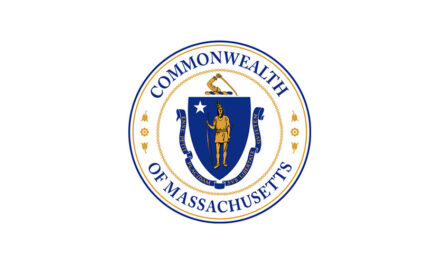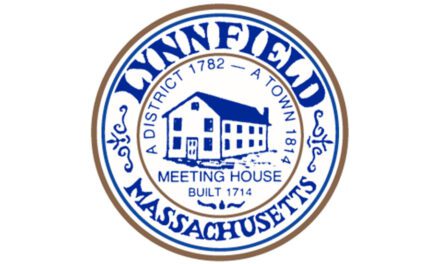Published July 1, 2020
By DAN TOMASELLO
 LYNNFIELD — Officials are urging parents to stay patient while the state continues finalizing guidelines for reopening schools this fall.
LYNNFIELD — Officials are urging parents to stay patient while the state continues finalizing guidelines for reopening schools this fall.
Gov. Charlie Baker and Department of Elementary and Secondary Education (DESE) Commissioner Jeff Riley unveiled a preliminary back-to-school framework during a June 25 press conference. The preliminary guidelines are designed to help school districts prepare for reopening buildings this fall after they have been closed since mid-March due to the COVID-19 virus pandemic.
“I would caution everyone not to move too quickly,” said Superintendent Jane Tremblay in an interview with the Villager. “We have all been told opening is going to depend on what the medical data is telling us and the medical data is changing every day.”
Tremblay noted the School Department will be required to submit three different reopening plans to the DESE as part of the process.
“The plans will be a hybrid plan, a straight remote learning plan and 100 percent full attendance in school,” said Tremblay.
Tremblay and incoming Superintendent Kristen Vogel stated in a joint letter sent to parents last week that the in-school plan must include safety precautions.
“Current medical research supports a safe in-person return to school — with safety requirements in place — as infection and transmission rates are lower for children than adults,” Tremblay and Vogel stated. “Preventive measures include masks and face coverings, physical distancing, hand washing and cleaning frequently touched surfaces. Masks and face coverings will be required for all students in grade 2 and above and for all adults. They are recommended for students in grade 1 and below.”
Students with medical conditions or other safety issues will not need to comply with the guidelines, and schools must plan for mask breaks during the day.
In addition to requiring students and staff to wear face masks and practice social distancing, DESE’s guidelines will mandate that schools implement smaller class sizes and classrooms be rearranged in order to maintain a minimum of three-feet between desks and six-feet whenever possible. The administration is encouraging districts to use libraries, auditoriums and cafeterias for additional space and to enlist specialist teachers, instructional coaches, reading specialists and any others who are properly certified to serve as “additional core teachers.”
State officials did not set a hard cap on group or classroom sizes and are leaving it up to local education officials to decide those numbers, which will need to comply with social distancing guidelines.
“These rules take every precaution possible, and are grounded in the best possible medical advice,” said Lt. Gov. Karyn Polito.
In a hybrid model, separate groups would attend school in-person on different days or weeks to avoid overlap.
Tremblay said the tentative start date for the 2020-2021 school year is Wednesday, Sept. 2. She said the state will be releasing additional guidelines during the second week of July.
“We just need everyone to stay tuned,” said Tremblay during the School Committee’s June 23 meeting. “Everybody is aware of the fact that is a really short timeframe because school will be starting in six weeks from the second week of July. But we are not in this alone. Every district in the state is going to have to figure this out in the same amount of time.”
Tremblay and Vogel stated in an email that the School Department is “in the process of organizing a Reentry Task Force composed of educators, parents and administrators who will collaboratively do the work of planning for opening our schools for the 2020-2021 school year.” They also noted the preliminary guidelines were released before local education officials were given a chance to review the information.
“This makes it impossible to prepare and provide answers to the real and pressing questions that you all have,” Tremblay and Vogel stated.
Even though school officials will be diligently planning for students’ return to the classroom this fall, Tremblay said, “That could all change based on what the medical data is telling us.” While novel coronavirus cases have been declining in Massachusetts and other states in the Northeast, there have been spikes in the South, Southwest and West Coast.
Baker said his administration crafted the guidelines with input from medical experts. He also said it’s important to have students return to the classroom.
“In developing the back-to-school plans, the department and our administration considered not only the risks associated with COVID-19 for in-person schooling, but also the risks associated with continuing to keep students out of the classroom,” Baker said. “Continued isolation poses very real risks to our kids’ mental and physical health, and to their educational development.”
Baker administration officials acknowledged preparing the three models and implementing the new protocols will be a costly endeavor.
While the planned implementation of a new school funding law remains in limbo amid the current recession, districts in Massachusetts will be able to access nearly $1 billion in state and federal aid to help them during the transition, Baker said. The administration plans to make $202 million available from its share of the federal Coronavirus Relief Fund to support reopening, and it will launch a separate $25 million matching grant program for virtual education technology. Those will supplement earlier federal grants directed to cities and towns for education needs.
That money will be critical for communities that must now anticipate annual local aid remaining level, at least for the start of fiscal year 2021, despite Baker’s pre-pandemic budget planning to inject $303.5 million more into the Chapter 70 education funding program.
“We know this work will require resources and that districts will have to plan for those resources,” said Riley.
— The State House News Service contributed to this report.




